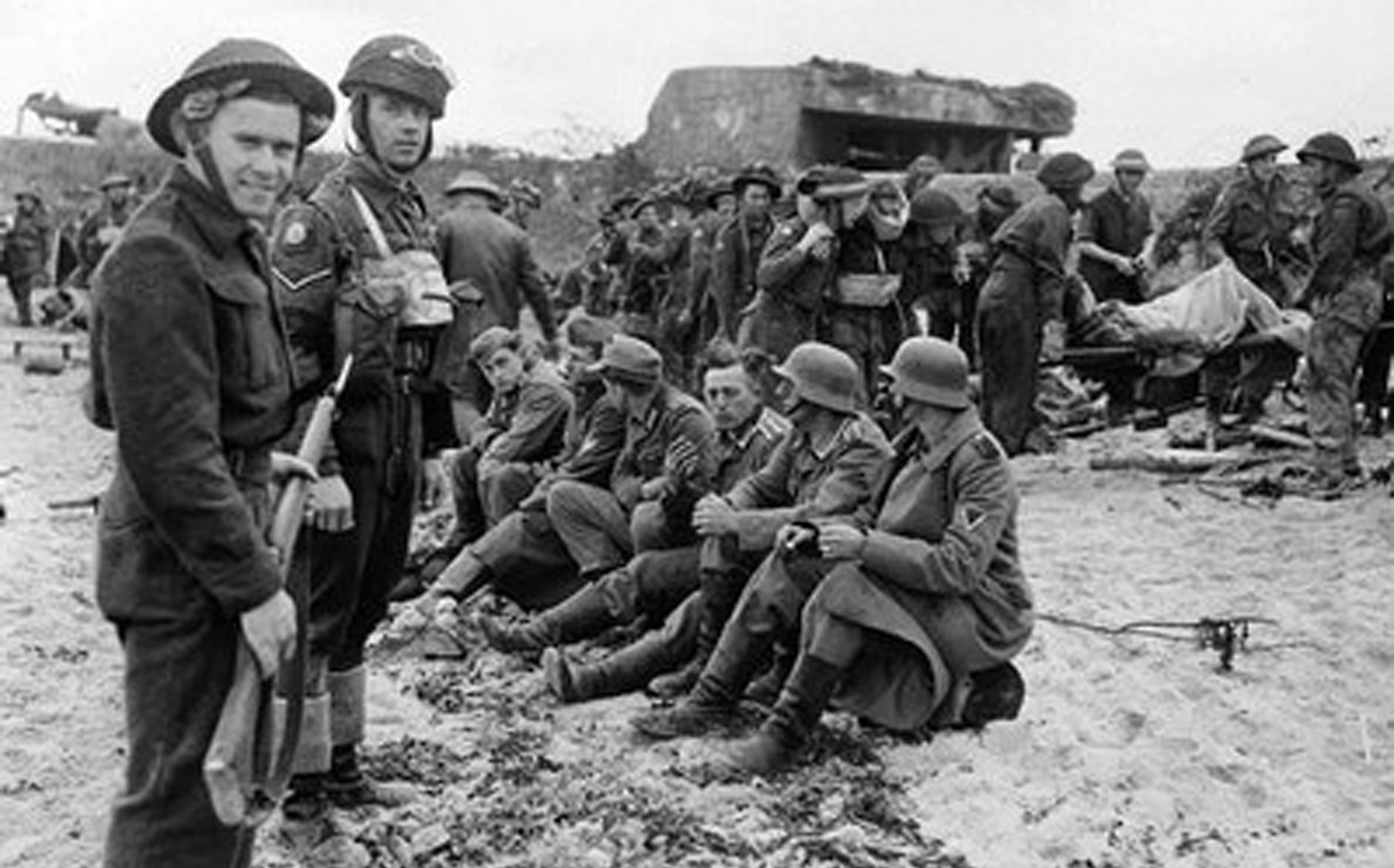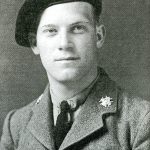NORMANDY – June 6 marks 80 years since Allied troops landed on the beaches of Normandy to begin the liberation of western Europe.
Nearly 150,000 troops, including more than 14,000 Canadians landed or parachuted into the area on the June 6, 1944 D-Day invasion, also called Operation Overlord.
It was the start of the 10-week Normandy campaign, and an event that is described as one of the “pivotal” points of the Second World War.
According to the Canadian Encyclopedia, total Allied casualties on D-Day exceeded 10,000, including 1,096 Canadians. Of those, 381 Canadians died, but that was just the beginning.
By the time the Battle of Normandy ended in August 1944, the Allies had suffered more than 209,000 casualties, including more than 18,700 Canadians. Over 5,000 Canadian soldiers died.
It’s not clear how many local men took part in the invasion and subsequent fighting in France, but it is clear that local families did not escape the sorrow of losing sons, brothers and fathers to the battle.
Newspaper records from that time period include various accounts of Wellington County residents involved in the invasion. Many of these stories are shared in the form of obituaries of young men who did not survive.
In honour of the 80th anniversary of D-Day, the Advertiser is paying tribute to some of the local men believed to have taken part.
The names that follow are by no means an exhaustive list – they likely represent just a fraction of local men who were there.
Their photos and details are shared with help from the Wellington County Museum and Archives and its Wellington County Remembers Database.
The database, which includes digital versions of photographs, letters, attestation papers, service records, and newspaper clippings, is searchable by name at wellington.ca/en/discover/mus-collectionsandresearch.aspx.
It was not possible to include photos of all of these men.
Most of these photos are reprinted with permission from WCMA, with the exception of the Reed brothers and Ambrose Santa, whose photos were found on the Veterans Affairs Canada website.
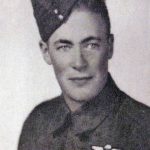 William Nelson Bell 1922–1944
William Nelson Bell 1922–1944
William Bell, of Arthur Township, is described in his Guelph Mercury obituary as “one of the first Canadian paratroopers to alight in France on D-Day. He enlisted in the tank corps in 1942 before transferring to the First Canadian Parachute Battalion in January 1943. He was reported killed in action in France on Aug. 27, 1944. The Arthur Enterprise News wrote, “Trooper Bell had been in France since D-Day and had taken part in much stiff fighting.”
Allan Henderson Gauley 1923–1944
The Aug. 24, 1944 edition of the Fergus News Record lists multiple local killed in action in France, saying “until the invasion of Normandy, Fergus boys were fairly fortunate in keeping out of the casualty lists.” Allan Gauley is listed as having died July 23. An earlier edition of the paper had reported he had been seriously wounded in the head, “presumably in Normandy,” and he was “dangerously ill.”
Gauley had enlisted in Fergus in 1942, while he was working at the Hill Street plant of Beatty Bros. Limited.
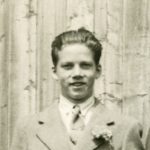 Robert Harry Johnston 1923–2016
Robert Harry Johnston 1923–2016
Robert Harry Johnston of Salem was a gunner in the Canadian military. He was sent to England in November 1941, and served there through June 1944. He was sent to France on D-Day, and offered continuous service until the end of the war in Europe.
Irwin Archibald Lytle 1921–1944
According to the Guelph Mercury obituary, Irwin Lytle was a paratrooper from Mount Forest who enlisted in 1940 with an Owen Sound unit. He trained at Camp Borden before heading overseas in June 1943. He was the youngest in his family “and was highly regarded in his home town,” the paper read.
“While the message reaching his mother did not state definitely where Trooper Lytle was serving, it is believed he was killed during the first hours of the invasion of France,” it said.
Orbie McIntosh 1921–1944
In a writeup in the Homer Mount Forest magazine, Orbie McIntosh is described as the son of Donald and Mabel McIntosh. He was born in Minto Township and moved to Mount Forest when he was seven years old. He had been working at the Ernst Bros. Foundry in 1942 when he enlisted.
He had joined up with the Essex Scottish Regiment before being transferred to the Highland Light Infantry, with which he went to France on D-Day, the bio states.
It quotes an obituary, saying “in a letter home to his parents he described the first few days in France when they were advancing towards Caen and having considerable front line action. When about three miles from Caen they had to dig in and stayed there four days without moving as the Germans were shelling them. The HLI did a lot of dangerous patrolling over fields and slopes where there was no cover.”
By October, McIntosh’s unit had advanced to Belgium, where he was killed just a week shy of his 23rd birthday.
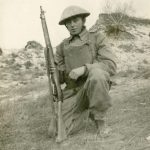 William Stanley Louttit 1919–1944
William Stanley Louttit 1919–1944
William Louttit, son of Stanley and Pearl Louttit, grew up in West Garafraxa Township. He enlisted in 1942 with the Armoured Corps in London, Ont., and was deployed overseas in May of 1943 with Winnipeg, Man.’s Fort Garry Horse Regiment.
His obituary notes he enlisted to work as a wireless operator in a tank.
He landed in France on D-Day, and survived, but was killed in action at the battel of Falaise Gap in Normandy on Aug. 14, 1944.
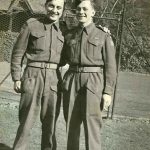 Gordon Reed 1921–1944 and Douglas Reed 1918–1944
Gordon Reed 1921–1944 and Douglas Reed 1918–1944
The Erin Advocate obituary for these Erin Township brothers says they were on active service on “Invasion day,” when they “paid the Supreme Sacrifice in France.” It notes a third son, Ross, was also on active service in England. Their father, who farmed for years in Erin, was also a veteran of the Second World War, and returned home in 1943, it said. “The parents and two daughters feel their sad loss keenly,” it said.
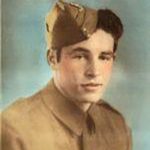 George Morrison Archibald Robertson 1922–1944
George Morrison Archibald Robertson 1922–1944
Son of George Robertson, Archie Robertson is described in the Fergus News Record as the “first Fergus soldier to be killed in the invasion of France.” He was wounded July 5 while laying communications wires, and died the same day.
A gunner, Robertson had enlisted in January 1941, and had been overseas almost three years when he died. Before enlisting, he worked in the paint spray department at Beatty Bros., and “was known to many Fergus people as a lacrosse player,” the obituary said.
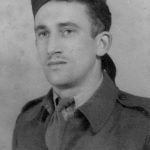 Ambrose Santa 1919–1944
Ambrose Santa 1919–1944
Ambrose Santa had lived in Drayton before enlisting in Galt in 1940. According to an obituary in the Drayton Advocate, he went overseas in July 1941, and had gone to France on June 6 as a member of the Highland Light Infantry.
The newspaper reported details of his death in the battle for Buron had come from a letter written home by another member of that force.
“The Allies had captured Buron and had entered it, but it was still being shelled by the Germans. Pte. Santa was in a weapon slit behind a stone wall when a shell burs through it near where he was stationed; he was wounded fatally, as were several others nearby,” it said.
Santa left behind a widow — a Scottish woman named Jean Williamson, who he had married overseas — and a daughter, Rosina, born March 19, 1944.
Gordon Herbert Thring 1919–2003
Gordon Thring was born June 24, 1919 in Eramosa Township, and grew up with nine siblings on his parents’ farm.
Thring enlisted with the Royal Canadian Air Force in October 1941, and fought in the D-Day battle.
He was shot down, crashed in a wheat field near Normandy. He was initially taken prisoner, but in the course of ensuing fighting, Thring’s captors ended up as his prisoners.
For his efforts, Thring was awarded the Distinguished Flying Cross.




